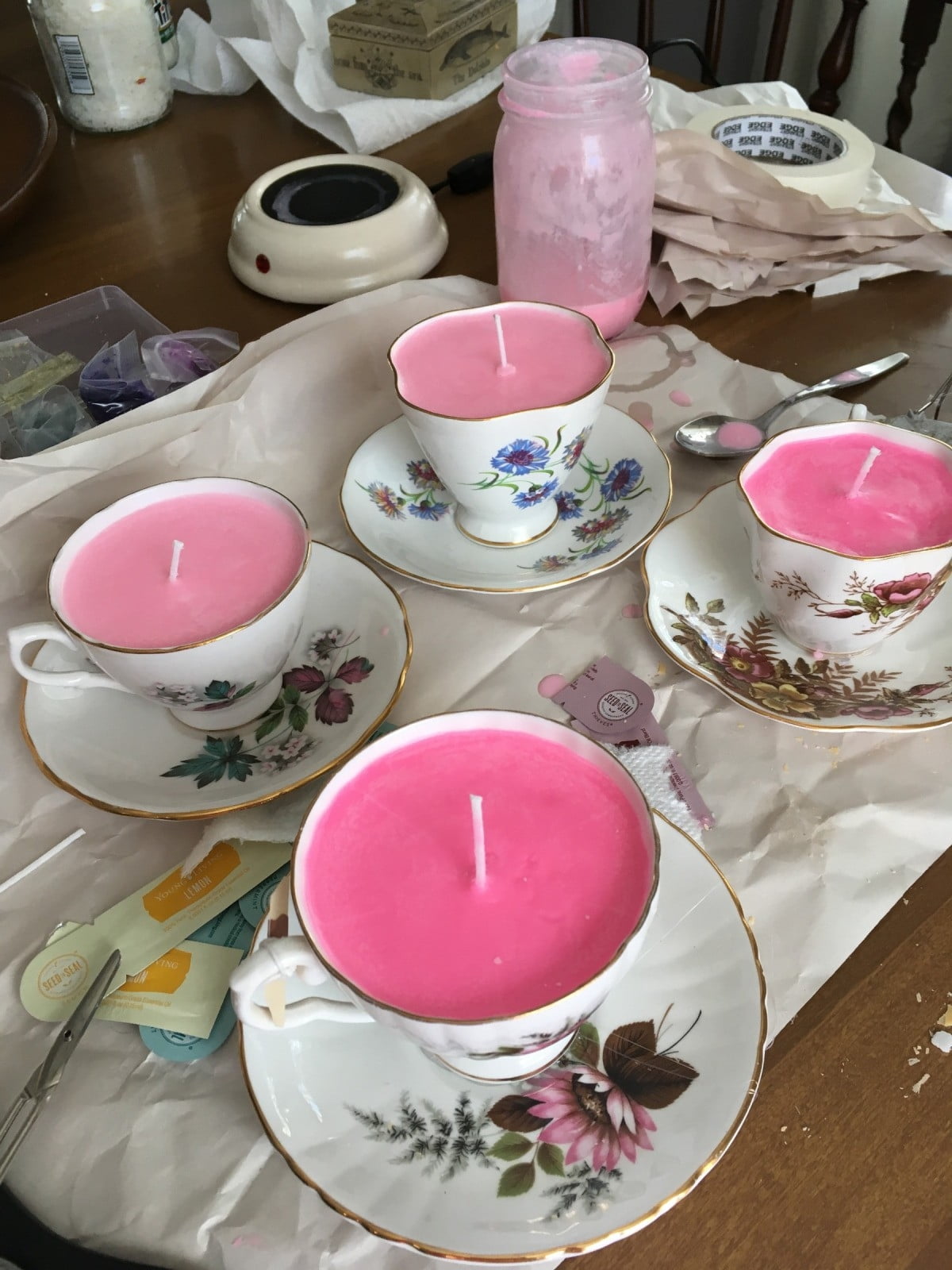Can you use coconut oil in candle making? Absolutely. Coconut oil is a versatile and popular ingredient in various crafts, including candle making. With its unique properties and long-standing history in traditional crafting, coconut oil has become an increasingly sought-after option for creating beautiful, fragrant candles.
Coconut oil is a natural, plant-based oil derived from the fruit of the coconut palm. It is known for its moisturizing and nourishing properties, making it a popular choice in skincare products. In candle making, coconut oil offers numerous benefits, such as a clean and slow burn with excellent scent retention. Its use also aligns with the growing demand for sustainable and environmentally-friendly alternatives to traditional candle materials.
The practice of using coconut oil in traditional crafting dates back centuries, with many cultures incorporating it into their rituals and ceremonies. Today, modern candle makers have embraced this age-old tradition and are exploring new ways to harness the unique properties of coconut oil to create high-quality candles.
In this article, we will delve into the science behind candle making with coconut oil and explore the various aspects of utilizing this versatile ingredient to craft beautiful and sustainable candles.
The Science of Candle Making
Coconut Oil and Candle Making
Coconut oil is a popular ingredient in candle making due to its unique properties. This natural oil, extracted from the meat of coconuts, contains a high concentration of saturated fats which give it a solid state at room temperature. When used in candle making, coconut oil can provide numerous benefits such as clean burning, longer-lasting candles, and enhanced fragrance retention.
Interaction With Other Candle Making Ingredients
In the process of making candles, coconut oil interacts with other key ingredients such as wax and fragrance oils. When combined with paraffin wax or soy wax, coconut oil can contribute to a smooth and creamy texture in the finished product. Additionally, coconut oil has a high fragrance retention ability which allows it to hold and disperse scents effectively when mixed with essential oils or fragrance oils.
Comparison to Other Oils
Compared to other types of oils commonly used in candle making such as soybean oil and palm oil, coconut oil stands out for its solid form at room temperature. This means that candles made with coconut oil have a higher melting point and burn more slowly than those made with liquid oils.
Additionally, coconut oil offers a unique tropical scent that can add an appealing aroma to the candles without the need for additional fragrances. Overall, the use of coconut oil in candle making provides distinct advantages that are worth exploring for both hobbyists and professional candle makers alike.
Properties of Coconut Oil for Candle Making
Coconut oil is a versatile and popular ingredient that is widely used in various DIY projects and crafts, including candle making. Known for its natural benefits and pleasant aroma, coconut oil can provide numerous advantages when creating homemade candles. Understanding the specific properties of coconut oil for candle making can help crafters achieve the desired results in terms of burn time, scent retention, and overall quality.
Melting Point and Consistency
One of the notable properties of coconut oil for candle making is its unique melting point and consistency. Coconut oil has a relatively low melting point, typically around 76 degrees Fahrenheit. This characteristic allows it to blend well with other candle making ingredients, contributing to a smooth and even burn. Additionally, coconut oil has a creamy texture when solidified, which can enhance the overall appearance of homemade candles.
Scent Retention and Fragrance Options
Another important aspect of using coconut oil in candle making is its ability to retain scents effectively. When combined with essential oils or fragrance oils, coconut oil
Longevity and Burn Time
Candles made with coconut oil are known for their longevity and extended burn time. The natural properties of coconut oil contribute to slower burning rates compared to candles made with other types of oils. This results in candles that last longer, providing extended enjoyment of their soothing glow and delightful aromas.
These key properties make coconut oil an excellent choice for those interested in creating high-quality homemade candles that offer long-lasting ambiance and delightful fragrances.
DIY Candle Making With Coconut Oil
Coconut oil is a versatile and popular ingredient in candle making due to its unique properties and benefits. When it comes to creating homemade candles, coconut oil can be an excellent choice for crafters who are looking for a sustainable and environmentally friendly alternative to traditional wax options.
One of the key advantages of using coconut oil in candle making is its low melting point and creamy consistency. This allows the coconut oil to blend well with other ingredients and helps to create a smooth, even burn in the finished candles. Additionally, coconut oil has excellent scent retention, making it a great option for adding fragrance to homemade candles.
To make your own candles using coconut oil, you will need a few essential ingredients and tools. First, gather high-quality coconut oil, wicks, containers for your candles, and fragrances if desired. It’s important to use caution when working with hot wax or oils, so be sure to have a dedicated workspace and follow safety guidelines throughout the process.
Experimenting with different ratios and combinations of coconut oil with other waxes or oils can also lead to unique results in terms of burn time, scent throw, and overall candle performance. Whether you’re a beginner or experienced crafter, working with coconut oil offers endless possibilities for creating personalized and sustainable candles. So next time you’re thinking about trying your hand at candle making, consider using coconut oil as an eco-friendly option with fantastic benefits.
Benefits of Using Coconut Oil in Candles
Coconut oil is a versatile and sustainable ingredient that offers numerous benefits when used in candle making. Its properties make it an excellent choice for creating environmentally-friendly and aromatic candles. The following are the benefits of using coconut oil in candles:
- Environmental and Health Benefits: Coconut oil is a renewable resource, making it an eco-friendly option for candle making. It is also non-toxic, so candles made with coconut oil burn cleanly without releasing harmful chemicals into the air.
- Aesthetic and Decorative Advantages: Candles made with coconut oil have a natural, creamy color that can complement various home decor styles. They also have a smooth and glossy appearance, adding elegance to any room.
- Comparison to Paraffin and Soy Candles: Unlike paraffin candles, which are derived from petroleum and release toxins when burned, coconut oil candles are clean-burning and do not contribute to indoor air pollution. While soy candles are popular for their sustainability, coconut oil offers a more affordable alternative with similar eco-friendly benefits.
In addition to these benefits, coconut oil has distinct properties that enhance the quality of candles. When used as the main ingredient in candle making, it burns slower than other oils like soy or palm wax, resulting in longer-lasting candles.
In terms of scent retention, coconut oil holds fragrance well, allowing for a lasting aroma when combined with essential oils or fragrance oils. Furthermore, its slightly lower melting point compared to other types of wax makes it easier to work with for DIY candle makers.
When using coconut oil in candle making, it’s important to choose the right type of coconut oil based on the desired outcome of the candles. Refined coconut oil has a neutral scent and color, while unrefined (virgin) coconut oil retains its natural aroma and may have a slight tint. Whether refined or unrefined, it’s crucial to select high-quality coconut oil sourced from reputable suppliers to ensure optimal performance in candle making processes.
Overall, incorporating coconut oil into candle making offers an array of advantages related to sustainability, aesthetics, functionality, and scent retention. With proper attention to sourcing the right type of coconut oil and experimenting with various fragrance options; crafters can create luxurious and eco-friendly candles that appeal to both visual aesthetics and olfactory senses alike.
With these benefits in mind; many artisans continue to embrace the versatility of this natural ingredient as they explore new ways of elevating their craft through innovative formulations using plant-based materials such as coconut oils.
Choosing the Right Type of Coconut Oil
When it comes to choosing the right type of coconut oil for candle making, it is essential to consider whether you want to use refined or unrefined coconut oil. Refined coconut oil undergoes a bleaching and deodorizing process, which removes its natural scent and flavor.
This can be beneficial for candle making as it allows for a more neutral base that won’t interfere with added fragrances. On the other hand, unrefined coconut oil retains its natural coconut scent and may add an extra layer of fragrance to your candles.
In addition to considering the refining process, it is important to pay attention to the sourcing and quality of the coconut oil you use for candle making. Look for high-quality, food-grade coconut oil that is free from additives or preservatives. It’s also recommended to choose organic coconut oil to ensure that no harmful chemicals or pesticides are present in the oil, ultimately promoting a cleaner burn.
| Consideration | Description |
|---|---|
| Refined vs. Unrefined | Choose between a neutral base (refined) or a naturally scented option (unrefined) |
| Sourcing and Quality | Opt for high-quality, food-grade, and organic coconut oil to ensure purity and safety |
Fragrance Options for Coconut Oil Candles
Scents play a crucial role in the overall appeal of candles. When it comes to making coconut oil candles, choosing the right fragrance is essential for creating an enjoyable and inviting atmosphere. There are various options for adding scents to coconut oil candles, including essential oils and fragrance oils.
Essential oils are derived from natural sources such as plants, flowers, and fruits, offering a wide range of aromatic options. These oils are often preferred by individuals looking for natural and organic options for their candle-making projects.
On the other hand, fragrance oils are synthetic but provide an extensive selection of scents that may not be available in essential oil form. They are also known for their strong scent throw, making them popular choices for those wanting highly fragrant candles.
When pairing fragrances with coconut oil in candle making, it’s important to consider complementary scents that will enhance the overall aroma. For example, citrus-based scents such as lemon or orange can add a refreshing touch to coconut oil candles, while floral fragrances like lavender or rose can create a calming and soothing ambiance. Additionally, woodsy scents like sandalwood or cedar can provide a warm and earthy undertone to coconut oil candles.
Blending different fragrances to create unique and custom scents is also an exciting aspect of candle making with coconut oil. Experimenting with various combinations can lead to personalized aromas that suit different preferences and occasions. However, it’s important to keep in mind that some scents blend better together than others and testing small batches before creating larger quantities is advisable.
| Fragrance Type | Characteristics |
|---|---|
| Essential Oils | Natural and organic; wide range of aromas from botanical sources |
| Fragrance Oils | Synthetic but offer diverse scent options; known for strong scent throw |
| Citrus | Refreshing and invigorating; pairs well with coconut oil’s tropical aroma |
Troubleshooting and FAQs
In conclusion, coconut oil can be a fantastic option for those looking to take their candle making to the next level. Its unique properties, including a low melting point and excellent scent retention, make it a great choice for DIY candle enthusiasts. Not only does coconut oil offer environmental and health benefits, but it also provides an opportunity for creative expression through its aesthetic advantages in candle making.
By understanding the science of candle making and the role of oils in the process, crafters can confidently experiment with using coconut oil as an alternative to traditional options like paraffin or soy. With the right equipment and safety measures in place, individuals can follow a step-by-step guide to creating their own coconut oil candles at home. Additionally, the versatility of coconut oil allows for experimentation with different ratios and combinations to achieve desired results.
When choosing the right type of coconut oil for candle making, understanding the differences between refined and unrefined options is crucial. Equally important is considering the sourcing and quality of the coconut oil, as this will directly impact the final product.
By incorporating essential oils or fragrance oils into coconut oil candles, crafters can create unique scents that cater to their personal preferences or reflect specific moods and occasions. Overall, by addressing common issues and frequently asked questions related to using coconut oil in candle making, individuals can harness its full potential while troubleshooting any challenges that may arise.
Frequently Asked Questions
What Is the Best Oil to Use for Candle Making?
The best oil to use for candle making depends on personal preference and the desired scent. Some popular options include soy wax, coconut wax, beeswax, and paraffin wax. Each type of oil has its own unique characteristics and benefits, so it’s important to choose an oil that aligns with the specific goals for the candle.
Is Coconut Wax Better Than Soy Wax?
Whether coconut wax is better than soy wax is a matter of personal opinion and specific needs. Both types of wax have their own advantages and disadvantages.
Coconut wax tends to have a cleaner burn and better scent throw, while soy wax is known for its eco-friendly properties and smooth appearance. It ultimately comes down to individual preferences and what works best for the intended purpose.
How Do You Make a Candle Smell Like Coconut?
Making a candle smell like coconut can be achieved by using coconut fragrance oils or essential oils. These can be added directly to the melted wax during the candle making process.
Additionally, using coconut-scented additives such as dried coconut flakes or coconut shells can enhance the overall fragrance of the candle. The key is finding a balance between the coconut scent and any complementary fragrances to create a pleasing aroma.

Welcome to my candle making blog! In this blog, I will be sharing my tips and tricks for making candles. I will also be sharing some of my favorite recipes.





